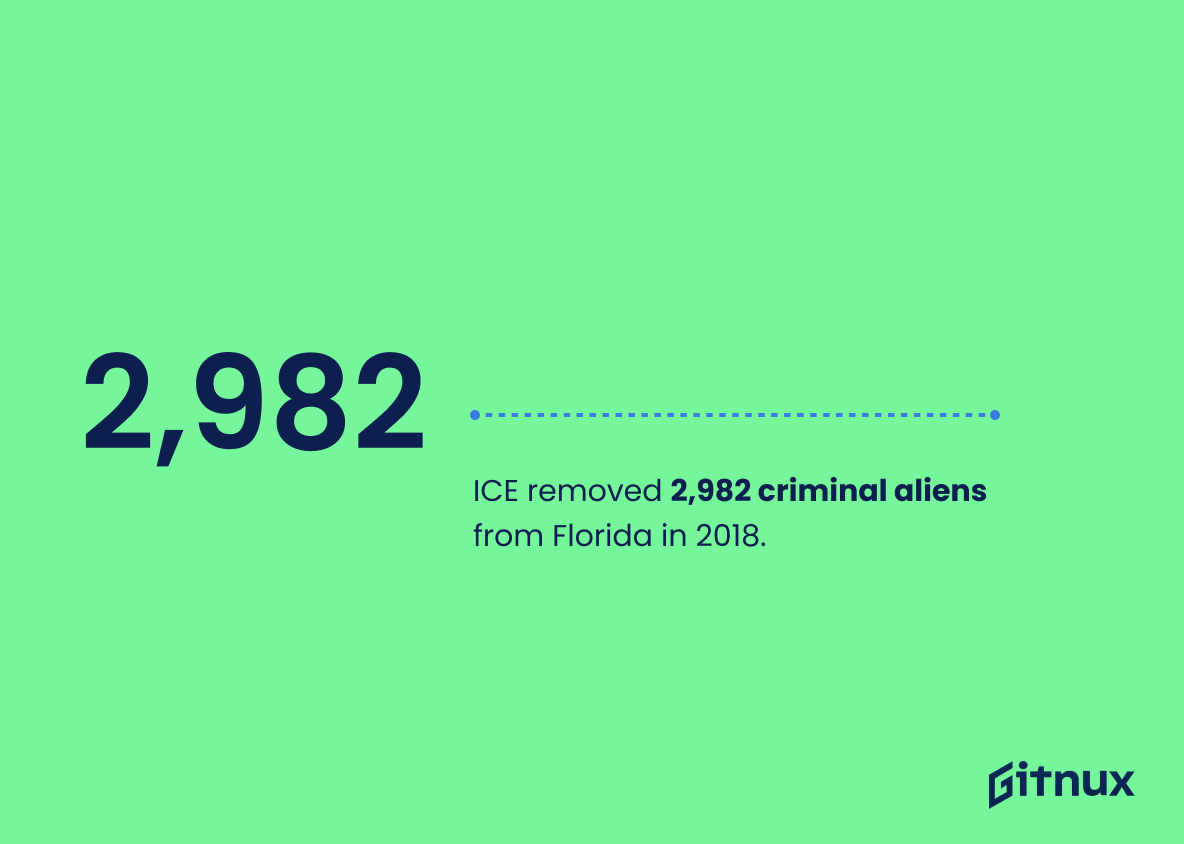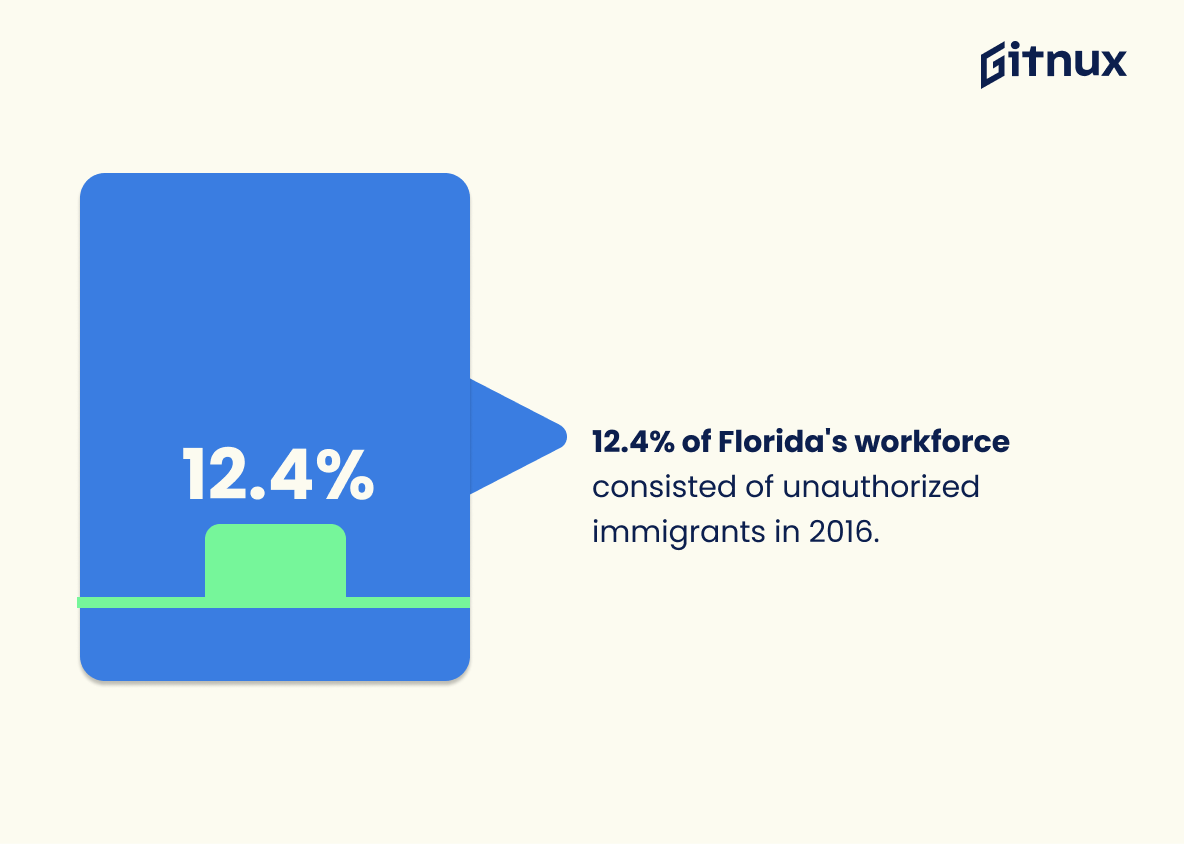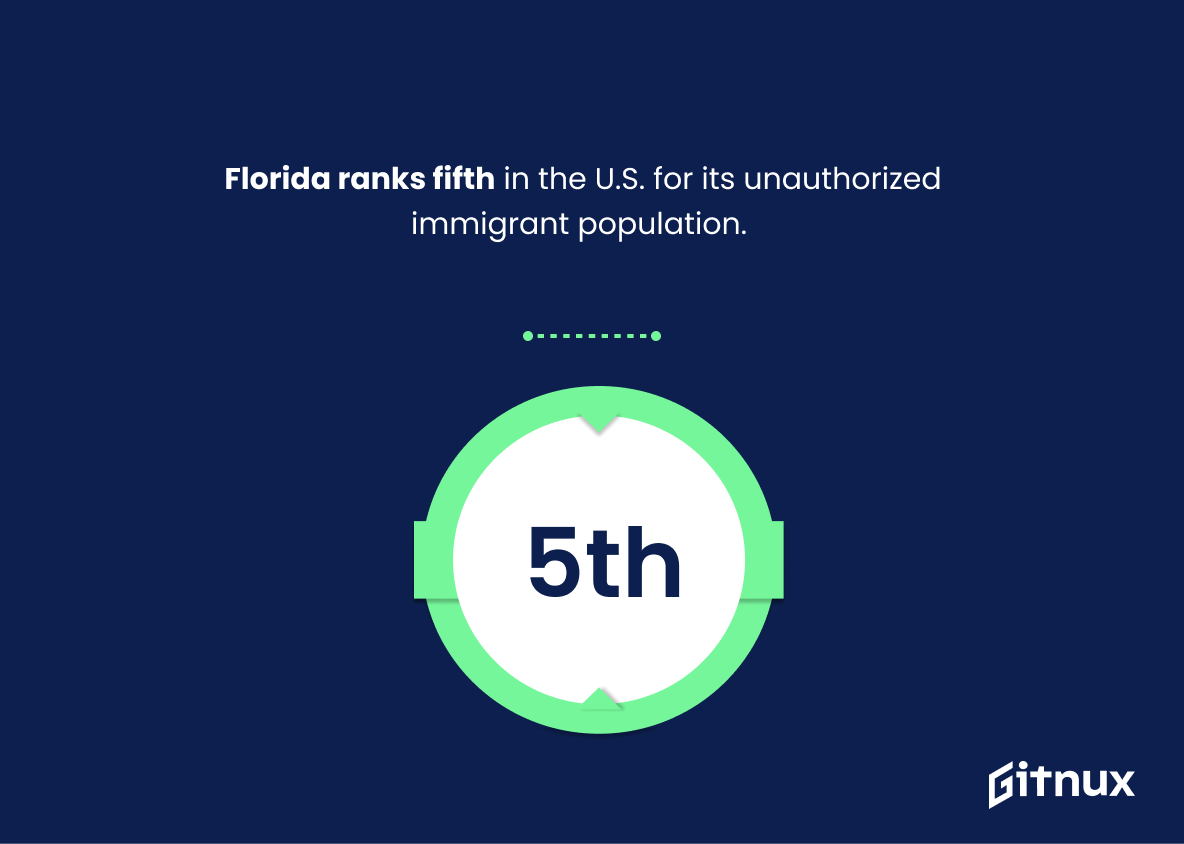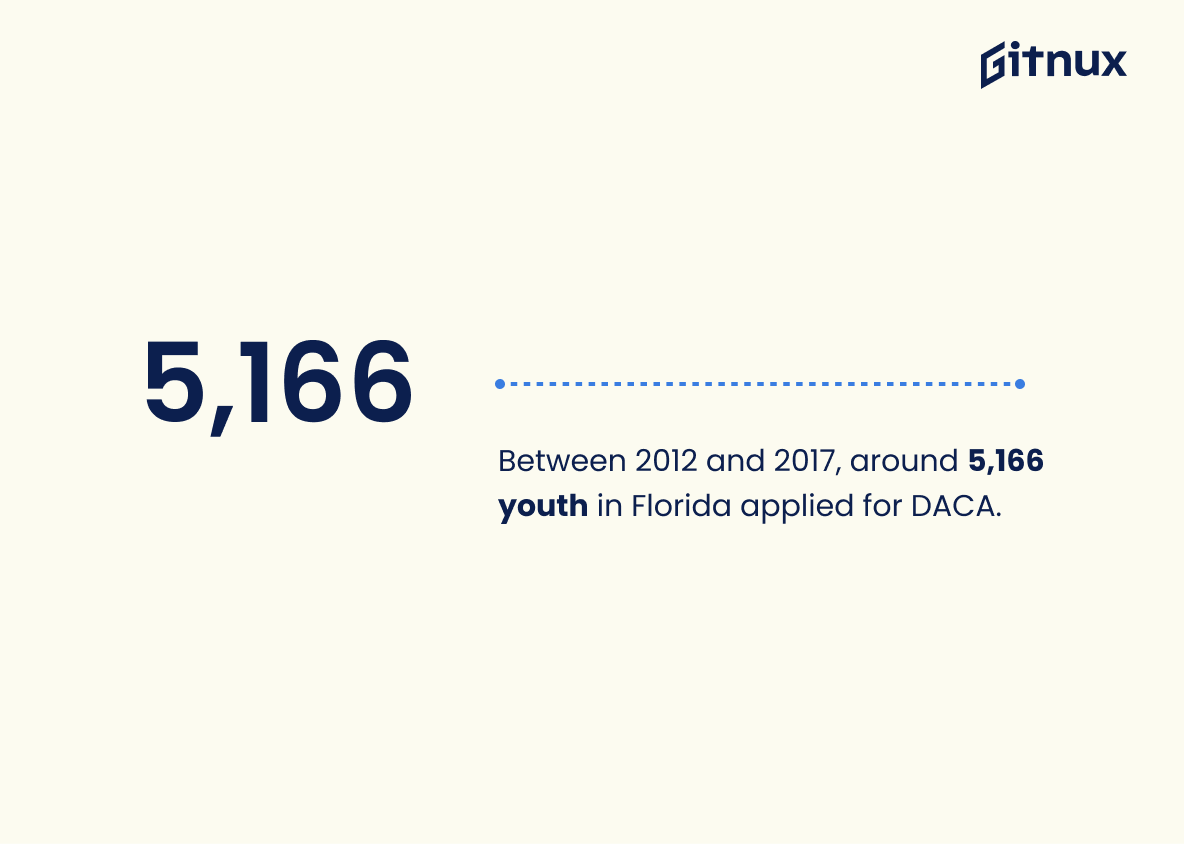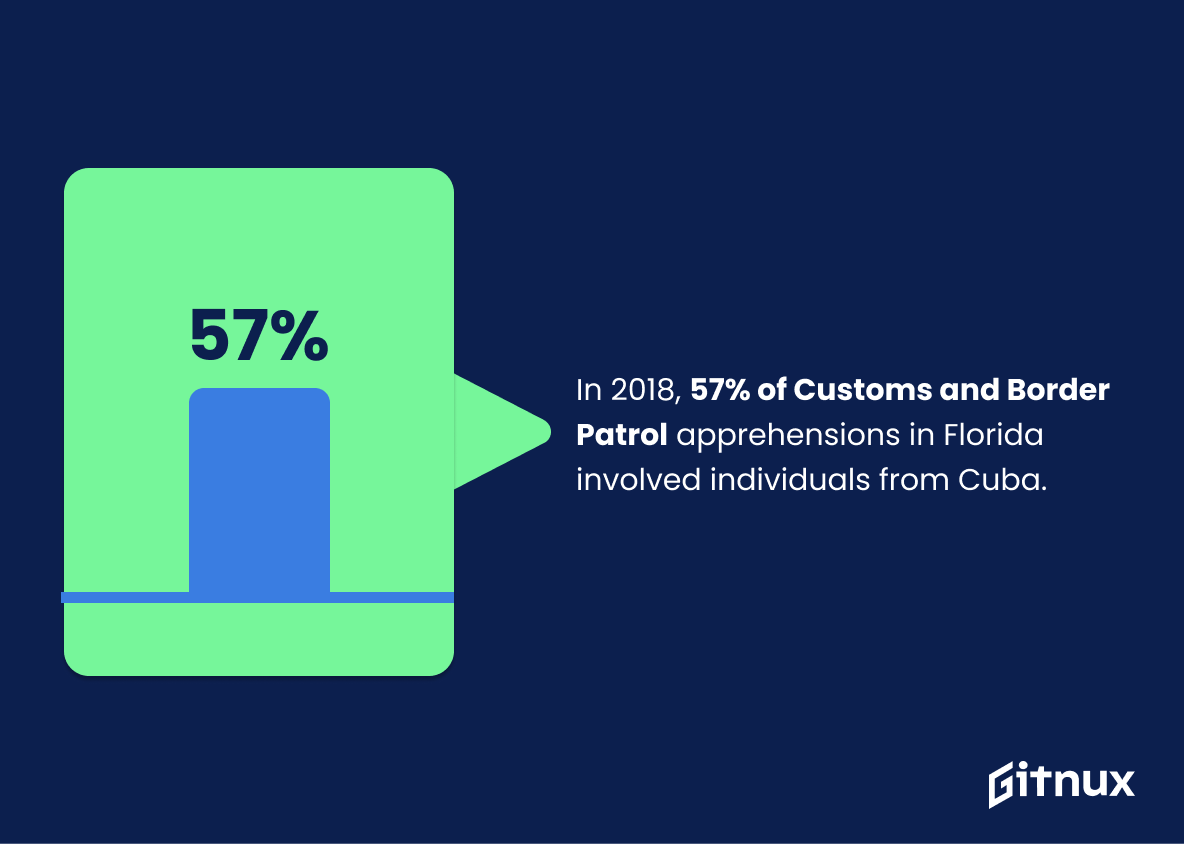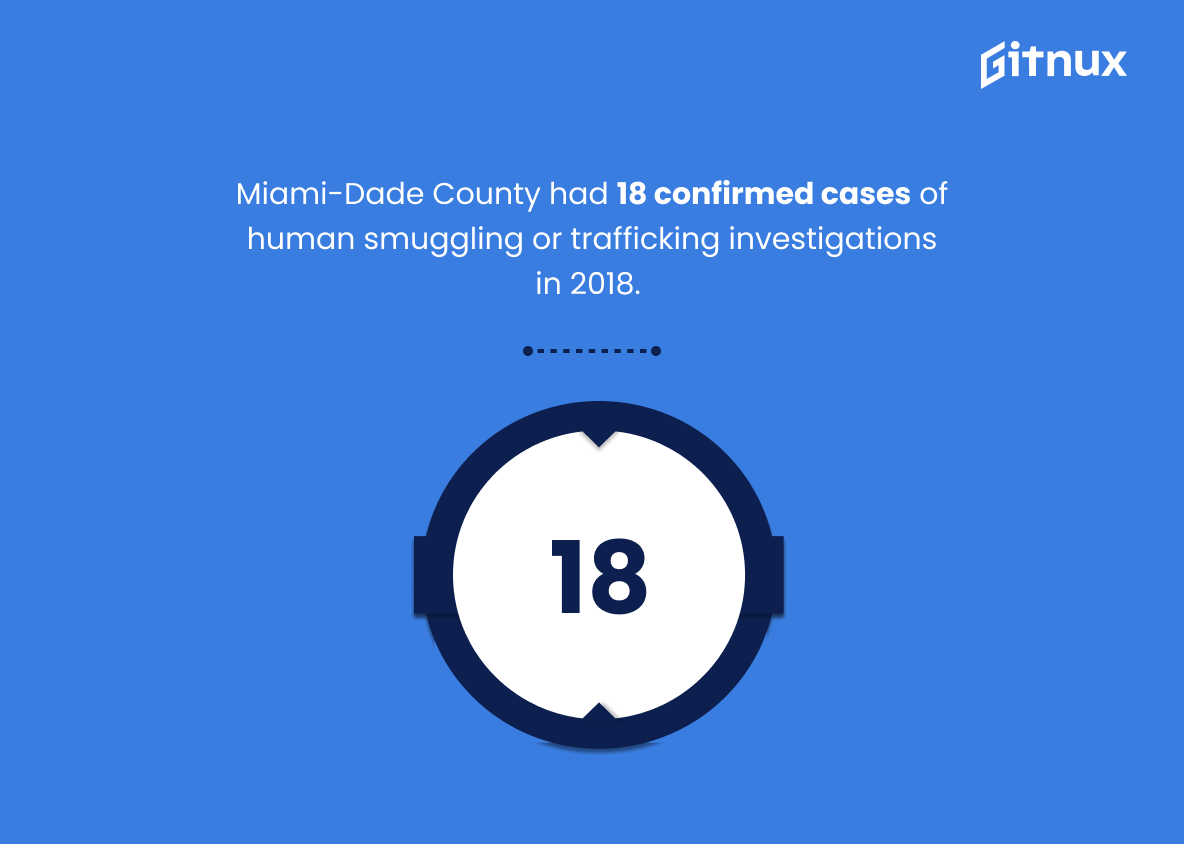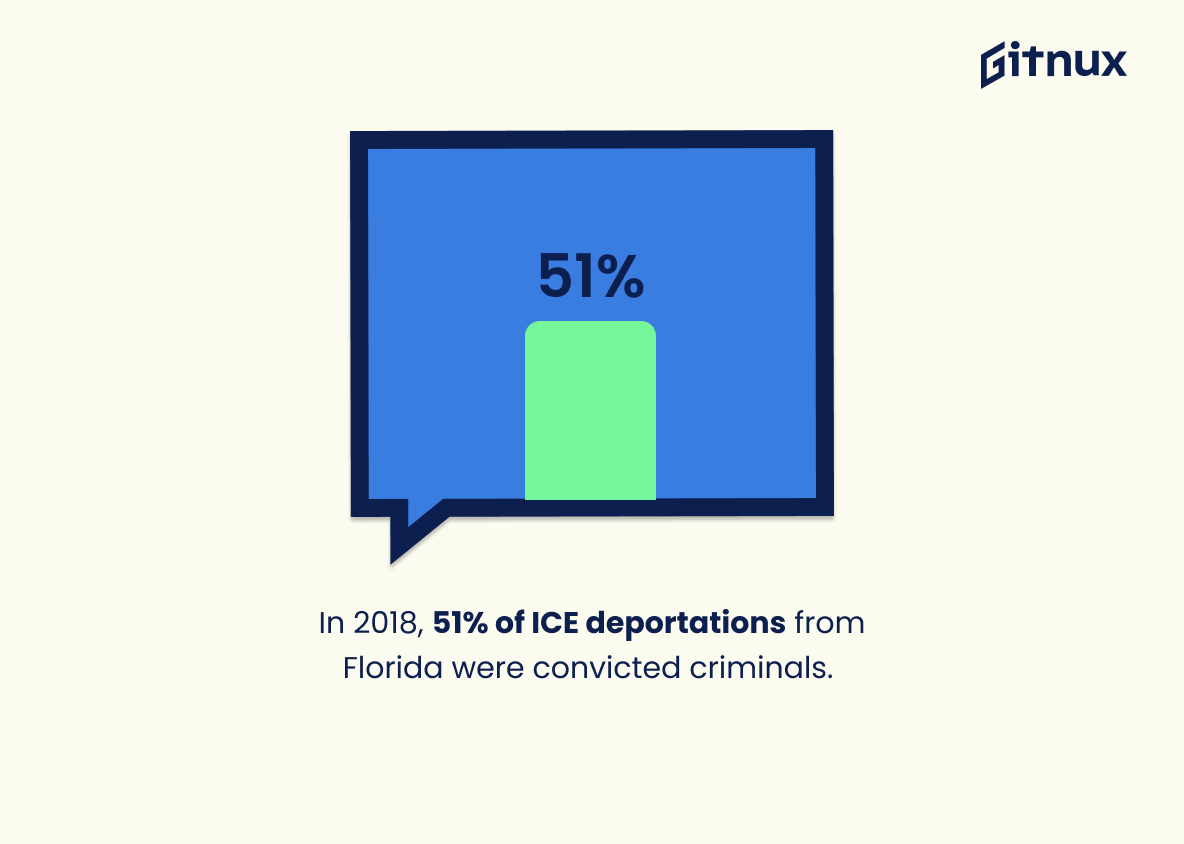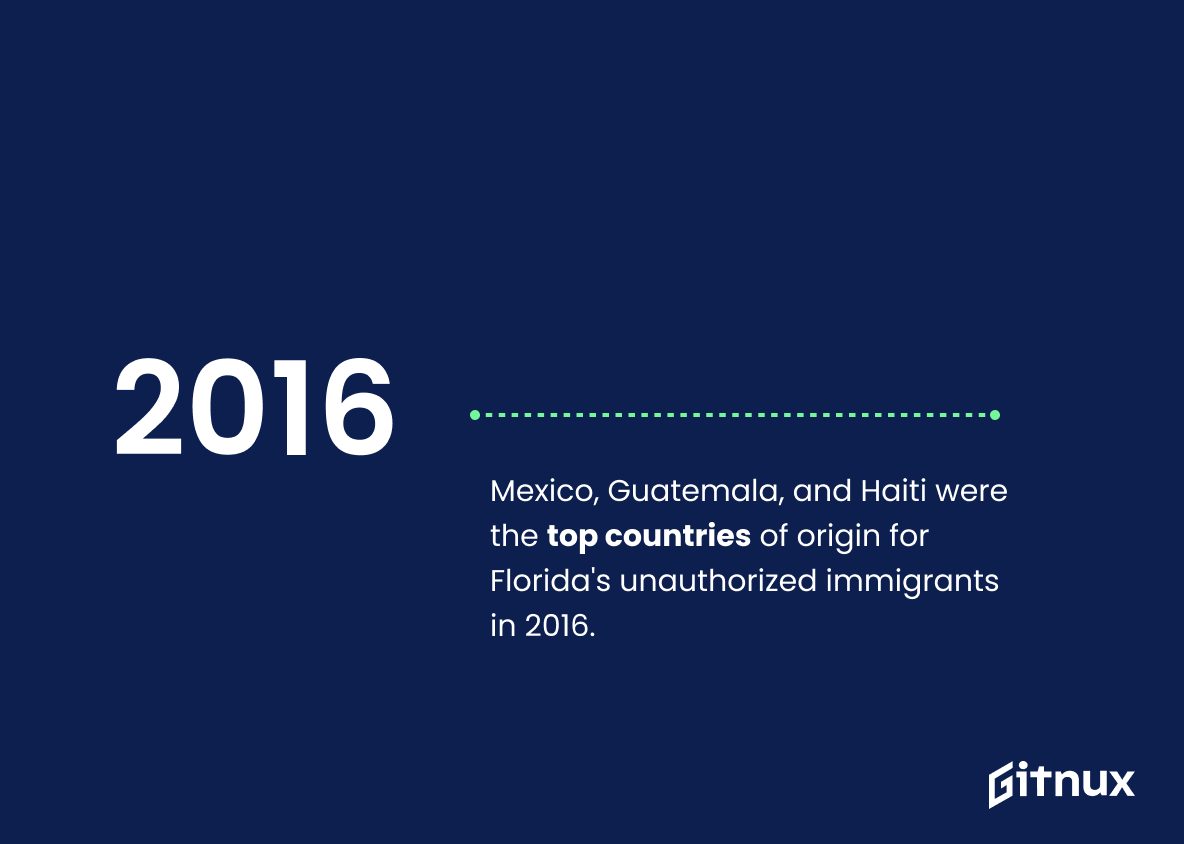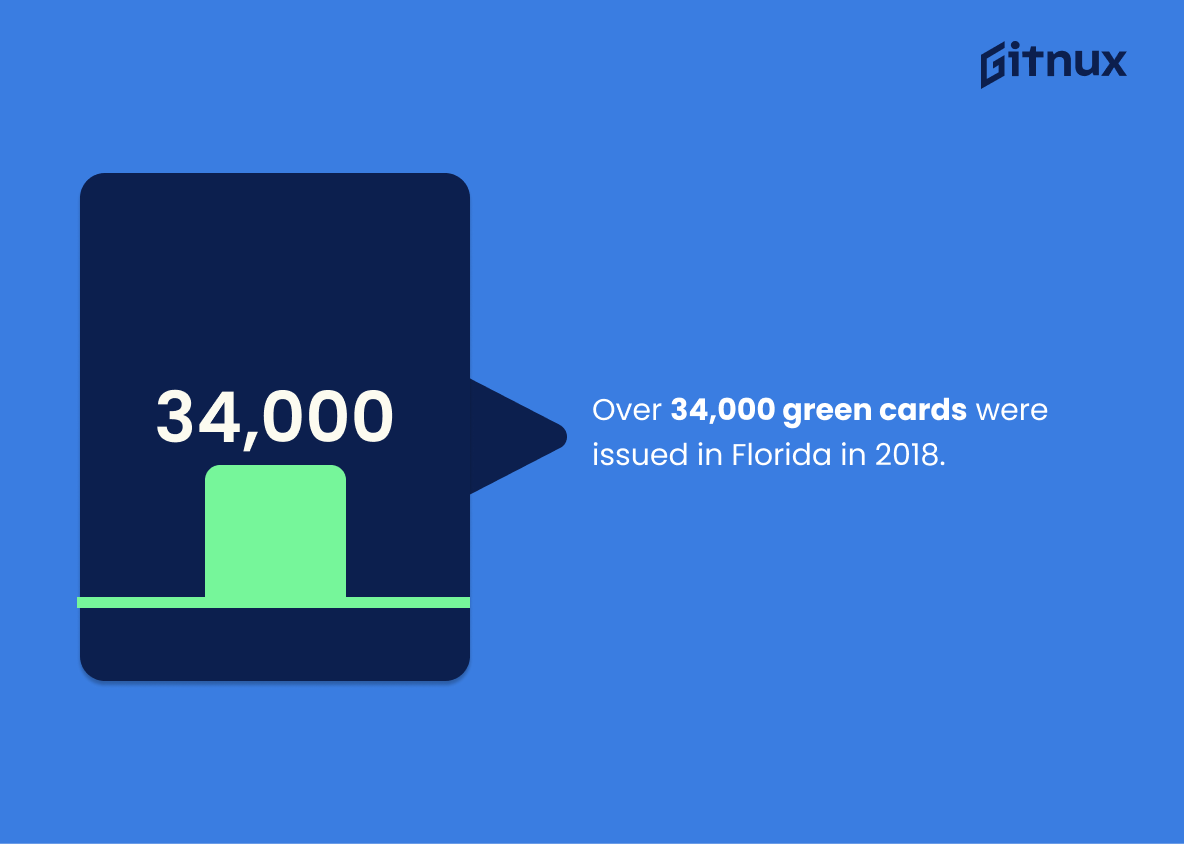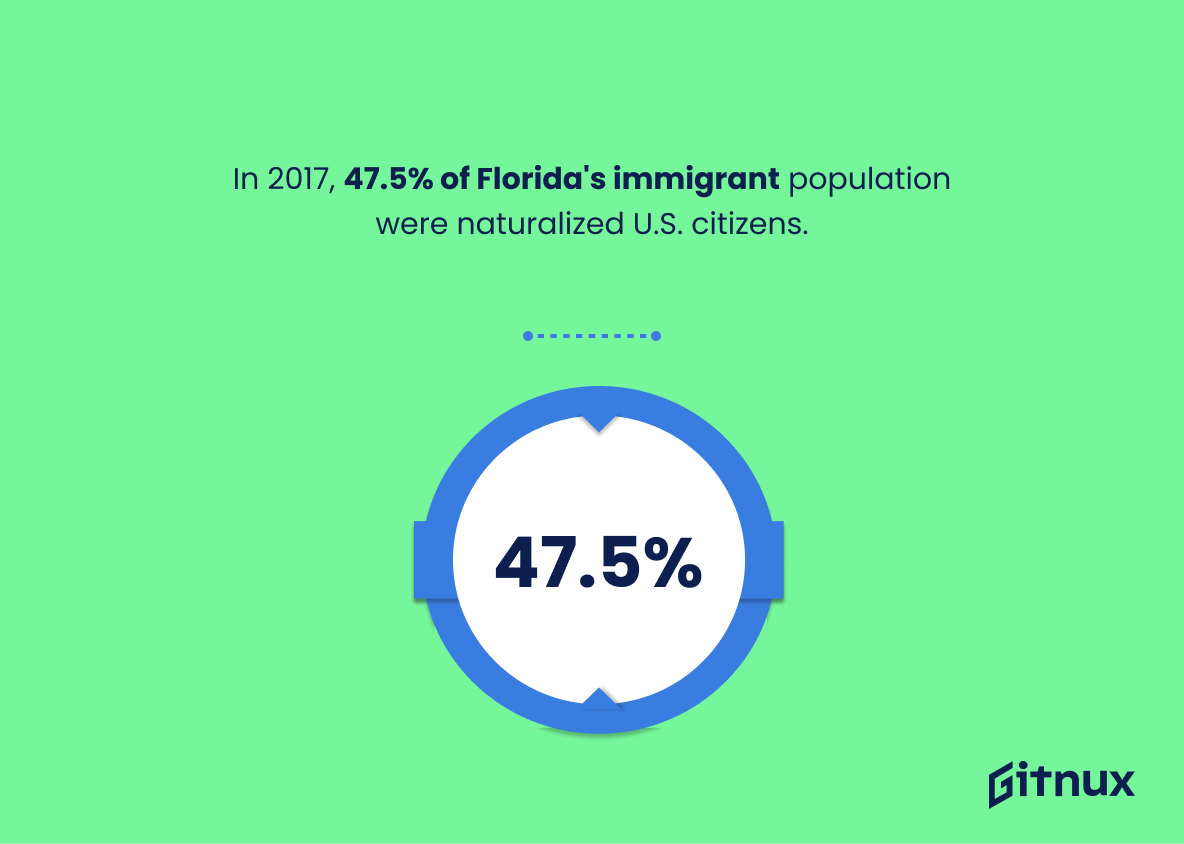Florida is home to a large and diverse immigrant population. According to the American Immigration Council, immigrants make up 20.4% of Florida’s total population in 2016. Of this group, an estimated 4% are unauthorized immigrants who reside in the state without legal status or documentation. This number amounts to approximately 750,000 undocumented individuals living in Florida as of 2016 according to Migration Policy Institute data.
In 2018 alone, U.S Immigration and Customs Enforcement (ICE) removed 2,982 criminal aliens from within the state’s borders while 12.4% of its workforce was comprised of unauthorized immigrants that same year according to Pew Research Center statistics . Additionally , it ranks fifth among all states for having one of the largest populations size when it comes to those residing illegally within its boundaries .
Furthermore , 16 . 1 %of immigrant-led households receive SNAP benefits with $588 million being contributed by these individuals towards taxes each year based on ITEP research findings . Miami – Dade , Broward and Palm Beach Counties contain two thirds out of all illegal residents found throughout Florida which has seen a decrease between 2009 and 2016 amounting 33 000 people over seven years time period as per PEW reportings .
Moreover , 51 %of ICE deportations were convicted criminals originating from Cuba making up 57 %of CBP apprehensions during 2018 whereas 5 166 youth applied for DACA protection since 2012 until 2017 according CIS reports along with 18 confirmed cases involving human smuggling or trafficking investigations taking place at Miami –Dade County last year only .. Finally 9 9 percent K-12 public school students have at least one parent lacking proper authorization documents yet 34 thousand green cards were issued across FL during 2018 plus 47 5 percent naturalized citizens amongst them alongside 2500 refugees welcomed into their midst back then too whilst detainers increased 76 percent compared against previous twelve months..
Florida Illegal Immigration Statistics Overview
In 2018, 2,982 criminal aliens were removed from Florida by ICE.
This statistic is a stark reminder of the reality of illegal immigration in Florida. It highlights the fact that ICE is actively working to remove criminal aliens from the state, demonstrating the importance of enforcing immigration laws. It also serves as a warning to those who may be considering entering the state illegally, as they could face serious consequences if caught.
12.4% of Florida’s workforce comprised of unauthorized immigrants in 2016.
This statistic is a powerful indicator of the impact of illegal immigration on Florida’s workforce. It demonstrates that a significant portion of the state’s labor force is comprised of individuals who are not legally authorized to work in the United States. This has implications for the state’s economy, as well as for the wages and job opportunities available to legal residents. The statistic is also important in terms of public policy, as it provides a basis for understanding the scope of the issue and the potential solutions that may be necessary to address it.
Florida ranks as the fifth-highest U.S. state in terms of the unauthorized immigrant population size.
This statistic is significant in understanding the scope of the illegal immigration issue in Florida. It highlights the magnitude of the problem and the need for effective solutions to address it. It also serves as a reminder of the importance of immigration reform and the need to ensure that all immigrants, regardless of their legal status, are treated with respect and dignity.
16.1% of immigrant-led households in Florida receive SNAP (food stamps) benefits.
This statistic is a telling indication of the economic impact of illegal immigration in Florida. It shows that a significant portion of immigrant-led households in the state are relying on SNAP benefits to meet their basic needs. This highlights the need for policies that can help these families become more financially secure and reduce their reliance on government assistance.
Unauthorized immigrants contribute $588 million in Florida state and local taxes each year.
This statistic is a powerful reminder of the significant economic contributions that unauthorized immigrants make to the state of Florida. It highlights the fact that, despite their lack of legal status, these individuals are still contributing to the state’s coffers and helping to fund essential services. This statistic is a testament to the value of the unauthorized immigrant population in Florida and should be taken into account when considering the state’s immigration policies.
Between 2012 and 2017, about 5,166 youth residing in Florida applied for DACA (Deferred Action for Childhood Arrivals).
This statistic is a powerful reminder of the impact that DACA has had on the lives of young people in Florida. It shows that, despite the uncertainty surrounding the program, thousands of young people have taken the initiative to apply for DACA in order to gain protection from deportation and access to work permits. This statistic speaks to the courage and resilience of these young people, and the importance of DACA in providing them with a chance to pursue their dreams.
In 2018, 57% of Customs and Border Patrol apprehensions in Florida involved individuals from Cuba.
This statistic is indicative of the fact that a significant portion of illegal immigration in Florida is coming from Cuba. It is important to note this because it provides insight into the demographics of those entering the state illegally and can help inform policy decisions and enforcement strategies.
There were 18 confirmed cases of human smuggling or trafficking investigations in the Miami-Dade County in 2018.
This statistic is a stark reminder of the prevalence of human smuggling and trafficking in Miami-Dade County in 2018. It serves as a reminder that illegal immigration is not only a problem of people crossing the border without permission, but also of people being taken advantage of and exploited. This statistic is a call to action to ensure that those who are vulnerable to exploitation are protected and that those who are responsible for these crimes are held accountable.
9.9% of K-12 public-school students in Florida have at least one unauthorized immigrant parent.
This statistic is a stark reminder of the impact that illegal immigration has on the lives of children in Florida. It highlights the fact that a significant portion of the K-12 public-school student population in Florida has at least one parent who is an unauthorized immigrant, and thus may be facing unique challenges due to their family’s immigration status. This statistic is a powerful reminder of the need for policies that protect and support these students and their families.
In 2018, 51% of ICE deportations from Florida were convicted criminals.
This statistic is a powerful indicator of the effectiveness of ICE’s efforts in Florida to deport individuals who have committed criminal offenses. It demonstrates that the agency is taking a proactive approach to removing those who have broken the law from the state, thus helping to ensure the safety of its citizens. Furthermore, it serves as a reminder that illegal immigration is not a victimless crime, and that those who choose to break the law should be held accountable for their actions.
In 2016, the top countries of origin for Florida’s unauthorized immigrants were Mexico (33%), Guatemala (16%), and Haiti (12%).
This statistic is a crucial piece of information when discussing Florida’s illegal immigration statistics, as it provides insight into the countries that are most heavily represented in the state’s unauthorized immigrant population. Knowing the top countries of origin for Florida’s unauthorized immigrants can help inform policy decisions and provide a better understanding of the challenges faced by those living in the state without legal status.
Over 34,000 green cards were issued in Florida in 2018.
This statistic is a telling indication of the number of people who have been granted legal status in Florida in 2018. It provides a valuable insight into the number of immigrants who have been allowed to stay in the state, and the impact they have had on the local economy and culture. It is an important piece of information to consider when discussing the state’s illegal immigration statistics.
In 2017, 47.5% of Florida’s immigrant population were naturalized U.S. citizens.
This statistic is significant in the context of Florida Illegal Immigration Statistics because it demonstrates the extent to which immigrants in the state have become integrated into the American way of life. It shows that nearly half of the immigrant population in Florida have taken the steps to become naturalized U.S. citizens, indicating that they are committed to living in the United States and contributing to the local economy. This statistic is a testament to the success of immigration policies in the state and the commitment of immigrants to become part of the American fabric.
In Florida, the unauthorized immigrant population decreased by 33,000 between 2009 and 2016.
This statistic is a telling indication of the impact of immigration policies in Florida. It shows that the number of unauthorized immigrants in the state has decreased significantly over the past seven years, likely due to stricter enforcement of immigration laws. This is an important piece of information for anyone interested in the current state of illegal immigration in Florida.
ICE detainers issued in Florida increased by 76% from 2016 to 2017.
This statistic is a telling indication of the growing presence of illegal immigration in Florida. The 76% increase in ICE detainers issued in the state from 2016 to 2017 suggests that the number of undocumented immigrants in Florida is on the rise, and that the state is taking steps to address the issue. This is an important statistic to consider when discussing the state’s illegal immigration statistics.
Conclusion
The data presented in this blog post paints a comprehensive picture of the illegal immigration landscape in Florida. Immigrants make up 20.4% of Florida’s population, with approximately 750,000 undocumented immigrants residing there in 2016. Unauthorized immigrants accounted for 4% of the total population and 12.4% of the workforce that same year.
In 2018, 2,982 criminal aliens were removed from Florida by ICE and 57% of Customs and Border Patrol apprehensions involved individuals from Cuba. Additionally, 9.9% of K-12 public school students have at least one unauthorized immigrant parent while 16
References
0. – https://www.migrationpolicy.org
1. – https://www.dhs.gov
2. – https://www.pewresearch.org
3. – https://www.cbp.gov
4. – https://www.ice.gov
5. – https://www.cis.org
6. – https://www.trac.syr.edu
7. – https://www.justice.gov
8. – https://www.itep.org


